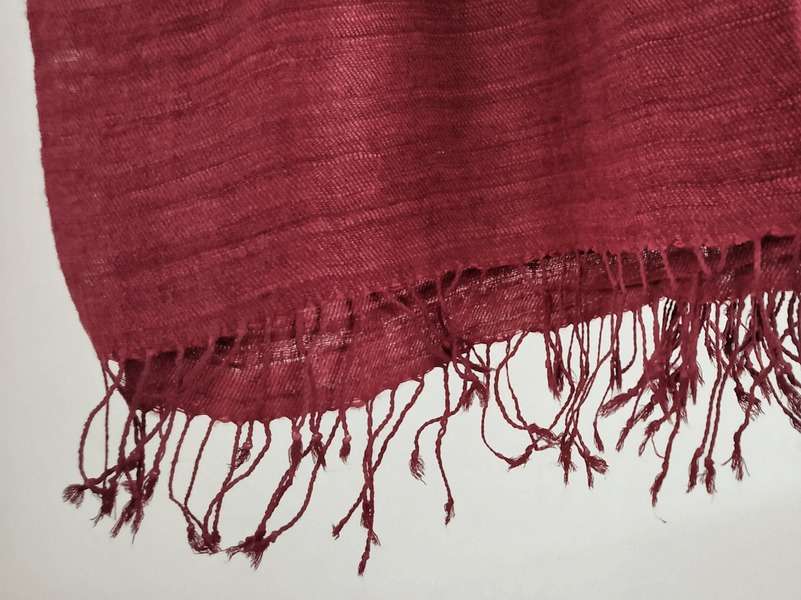
Introduction:
The combination of Brazil wood and charcoal dyes creates an exquisite purple-pink hue that merges the deep red of Brazil wood with the cool, dark tones of charcoal. This blend is particularly valued in Nagaland and Assam, where artisans use it to create textiles that feature rich, complex colors with both visual and cultural significance. The dyeing process highlights the ingenuity of North-Eastern artisans, who skillfully mix natural dyes to produce a palette that reflects the region’s diverse landscapes. The purple-pink shade is prized for its uniqueness and is frequently used in traditional garments and handloom products.
Description:
To create the striking purple-pink color, artisans in Nagaland and Assam use a combination of Brazil wood, known for its vibrant red tones, and charcoal, which offers a range of black and grey shades. Brazil wood dye is extracted from the heartwood of the tree by boiling it to release the red pigment, while charcoal is produced by burning organic matter, such as wood, and grinding it into a fine powder. The charcoal is then mixed with water to create a dark, inky dye solution.
The process begins with dyeing the fabric in the Brazil wood solution, allowing the red pigment to deeply penetrate the fibers. Depending on the desired shade, the fabric may be dipped multiple times to achieve a more intense red. Once the red base is set, the fabric is transferred to the charcoal dye bath, where the cool, dark tones blend with the red to create a distinctive purple-pink hue. The interplay between the warmth of the Brazil wood and the coolness of the charcoal results in a color that is both bold and subtle, with varying undertones of pink and purple depending on the dyeing method.
The key to achieving the perfect purple-pink shade lies in balancing the two dyes. Artisans carefully monitor the concentration of each dye and the number of dips to ensure that the colors blend harmoniously. Too much charcoal can overpower the Brazil wood, resulting in a darker, more muted tone, while too little may leave the fabric too red. The use of natural mordants, such as alum or iron, helps to fix the dye and enhance the vibrancy of the final color.
This dyeing technique is especially popular in Nagaland, where bold colors are often used in traditional garments and accessories. The purple-pink hue produced by this combination is associated with creativity, individuality, and cultural identity. In Assam, the color is similarly valued for its uniqueness and is often used in handloom textiles such as shawls, scarves, and wraps, where it adds a modern twist to traditional patterns.
The use of Brazil wood and charcoal dyes is also deeply rooted in the region’s sustainable dyeing practices. Both dyes are derived from natural, renewable resources, and the dyeing process is free from synthetic chemicals, making it an environmentally friendly alternative to industrial dyes. By using locally sourced materials, artisans in North-East India contribute to the preservation of their natural environment while promoting eco-friendly textile production.
In addition to its environmental benefits, the purple-pink hue created by Brazil wood and charcoal is highly versatile. The color can be paired with a wide range of other natural dyes, such as indigo or turmeric, to create complex, layered textiles that reflect the diverse cultural heritage of the North-East. The unique blend of colors also makes these textiles highly sought after by consumers who appreciate handmade, eco-friendly products with a story behind them.
As the demand for sustainable fashion continues to grow, the purple-pink hue produced by Brazil wood and charcoal stands out as a testament to the creativity and skill of North-Eastern artisans. By combining these two natural dyes, they create a color that is both beautiful and meaningful, offering a sustainable alternative to mass-produced, synthetic textiles while preserving the rich traditions of their craft.